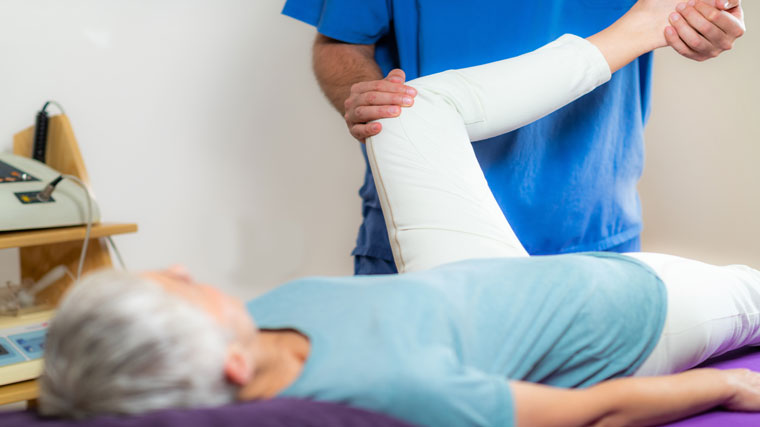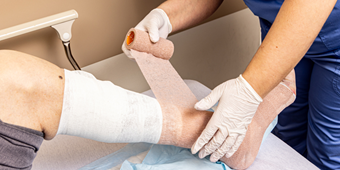Recovering From Joint Replacement? Here’s What To Expect

Find Your Perfect Match
Answer a few questions and we'll provide you with a list of primary care providers that best fit your needs.
Joint replacement surgery holds the promise of an active, pain-free lifestyle. But the road to recovery requires both time and patience.
Age and wear-and-tear lead to most hip and knee replacements, the most common joints replaced each year, according to the American Academy of Orthopaedic Surgeons. Orthopedic surgeon Richard Davis II, MD, cautions that the type of activity you can engage in after surgery depends on your pre-surgery lifestyle. “Someone who was active and exercised a couple of times a week is going to have an easier time being active after surgery than someone who wasn’t as active,” he says.
Typical Recovery Times
Dr. Davis provides these general guidelines:
- Typically has a shorter recovery time than a total knee replacement
- Takes about six to eight weeks to resume normal activity with no limitations
- Recovery involves six weeks of physical therapy to regain normal motion, followed by several weeks of physical therapy to strengthen the surrounding muscles.
- Recovery time depends on whether the replacement was partial or total.
- Expect two to three months before engaging in regular, low-impact activities such as walking, swimming, or biking.
Tips For a Full Recovery
If you’re headed for joint replacement, Dr. Davis suggests keeping these pointers in mind:
- Watch out for the signs. Slowly move back into an active lifestyle while being aware of the signs that may signal you need to slow down. This is easier to see with a knee replacement, where swelling around the knee is the first sign that activity needs to slow down.
- Don’t skimp on therapy. Your doctor may prescribe physical therapy to help strengthen the muscles around the replaced joint. Many times, the muscles are weak before surgery because the patient has not been as active due to the pain. Participating in therapy will make a return to physical activity smoother and with less risk for injury.
- Preservation is the goal. Preserving a joint prosthesis should always be your goal. For this reason, low-impact sports are recommended. Those who return to more high-impact sports on a regular basis, such as running, may feel good while they are doing it, but could run the risk of having the prosthesis replaced quicker than those who don’t engage in such activity.
- Past may determine the future. How active you were prior to experiencing pain or injury to the joint will determine what you are able to do after surgery. Naturally, someone who was very active prior to surgery will be able to have a higher level of physical activity after a replacement.
Once you’ve recovered fully, Dr. Davis recommends following these exercise guidelines from the American College of Sports Medicine: 20 to 30 minutes of aerobic activity at least three to four times a week. This amount has shown to improve patients’ quality of life, including cardiovascular health and bone strength, and decrease incidents of depression and anxiety.
Find Your Perfect Match
Answer a few questions and we'll provide you with a list of primary care providers that best fit your needs.
Source: Richard Davis II, MD, Premier Orthopedics; American Academy of Orthopaedic Surgeons; American College of Sports Medicine





